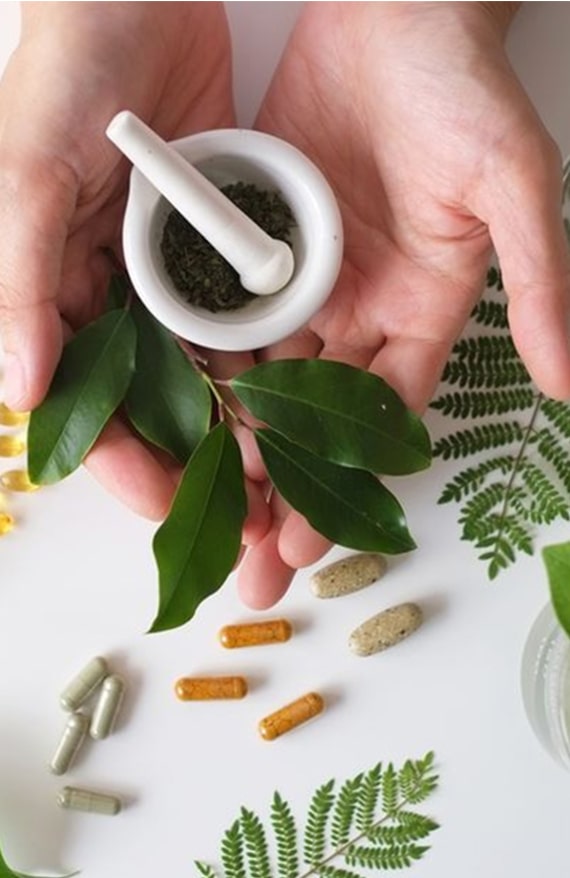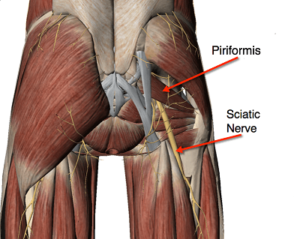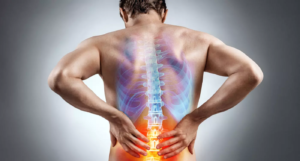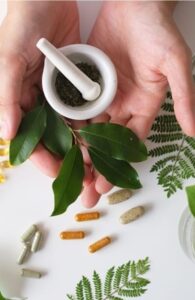Is your Sciatica Pain making your life miserable?

Sciatica pain can make life miserable. Walking, standing, bending over, driving a car, working at a computer, catching up on household chores, sneezing or coughing, and many other activities of daily living can cause sudden and intense pain. Patients who suffer from sciatica, especially of a more acute nature, find the symptoms disrupting many aspects of their life……
Sciatica is a general term for pain originating from the sciatic nerve. Sciatica is a symptom of a disorder that causes mild to sharp and sometimes excruciating pain. Patients have described sciatic pain as mildly disturbing to burning, aching, deep, and like a sudden bolt of lightning. Sciatic nerve pain travels from the buttock, down the back of the thigh, and into the leg. Leg pain is the classic hallmark of sciatica. Low back pain may accompany sciatica, and some patients experience sciatic pain extending into the foot. Another characteristic of sciatica is it usually affects either the lower left or right side of the body.

A general confusion is that sciatica is an ailment. This is not so actually. Sciatica is the name given to the set of symptoms shown due to an inflammation at any point along the entire sciatic nerve. Hence, for the treatment of sciatica, the physician needs to ascertain where the problem has originated from. The treatment of sciatica is different in different persons due to this variation. Sciatica is felt more with advancing age. Generally, 30 is the age where the sciatic pains might begin in a person, and they go on aggravating as the age advances.
One reason the sciatic nerve causes so much pain is because it is the longest nerve in the body. The nerve starts at the back of the pelvis and runs downward through the hip area and buttocks into each leg. Near the knee, the sciatic nerve divides into two nerves: the tibial and peroneal nerves. The tibial nerve runs behind the knee and the peroneal nerve runs along the side of the calf and ankle. Through the tibial and peroneal nerves, the sciatic nerve innervates (‘stimulates’) the action of many muscles in the lower legs and enables feeling in the thighs, legs, and feet.


Besides pain, other symptoms may accompany sciatica. These symptoms include sensations such as tingling, pins and needles, burning, numbness or muscle weakness. Such symptoms may be felt in the buttock, thigh, behind the knee, calf, ankle, and sometimes the foot.
Causes of Sciatica
Sciatica is not a condition; it is a medical term used to describe symptoms caused by other low back conditions. Several low back conditions can cause sciatica, including:
- Bulging disc or herniated disc: This is the most common cause of sciatica. When a disc bulges, the gel-like center (nucleus pulposus) pushes against the outer wall of the disc (annulus fibrosus). A herniated disc means that the nucleus pulposus breaks through the annulus fibrosus. With both bulging and herniated discs, the disc material can press on nerve roots, causing sciatica. The consequences of a herniated disc are worse than those of a bulging disc. The disc material that leaks out contains an acidic, chemical irritant (hyaluronic acid) that causes nerve inflammation.
- Degenerative disc disease (DDD): Sciatica is a common result of the ageing process that affects discs called degenerative disc disease. DDD is a change in the disc shape and function, and it can result in a bulging disc or a herniated disc and pain.
- Piriformis syndrome: The piriformis muscle, located in the lower part of the spine, connects to the thigh bone, and helps one rotate his/her hip. The sciatic nerve runs under the piriformis muscle, so muscle spasms can compress the sciatic nerve. It may be difficult to diagnose and treat as it is not easily identified by x-ray or MRI.
- Pregnancy: The extra weight and pressure on the spine caused by pregnancy can cause compression of the sciatic nerve. The symptoms will usually go away after childbirth.
- Spinal stenosis: Your nerves travel through passageways in your spine, and when this space narrows (stenosis), it can put pressure on the nerves in your low back.
- Spinal tumors and spinal infections: Although very rare, tumors and infections can compress the sciatic nerve.
- Spondylolisthesis: If a vertebra slips forward over the vertebra below it, it is called spondylolisthesis. This slip can pinch the nerve root and cause sciatica.
- Trauma: One can develop sciatica because of direct nerve compression from an outside force. For example, you could be injured in a car accident, resulting in a pinched nerve in your low back.
Sciatica causes according to Ayurveda
- Intake of Vata aggravating foods like adhaki (pigeon pea), chanaka (Bengal gram), kalaya (peanut), masura (red lentil), nishpava (flat bean), uddalaka etc.
- Excess intake of dry, light, and cold food
- Excess intake of pungent, bitter, and astringent food
- Heavy weight lifting, long walk, improper lie or sitting positions
- Suppression of urine, feces etc.
- Improper practice of enema, purgation etc.
- Fall or injury etc.
Ayurvedic Management of Sciatica
Ayurveda is specialized in treating Sciatica with highest treatment success rate. It offers excellent Panchakarma therapies along with internal medicines for treating Sciatica. Ayurveda described sciatica as Gridhrasi (Gridhra means vulture), as the gait of the affected person resembles that of a vulture’s walk and the inflamed nerve appears like its beak.
Ayurveda categorized Sciatica as one of diseases caused by vitiation Vata (one of the main dosha in the body, responsible for the movement and functionality of the body). Sometimes even kapha (dosha responsible for lubrication and bodily fluids) vitiation along with Vata (vata kaphaj) also causes sciatica.

Treatment in Ayurveda is aimed at restoring the equilibrium through correction of the underlying functional in-equilibrium. Ayurvedic treatments for Sciatica concentrate on bringing back the aggravated vata or vata kapha to the state of equilibrium and thereby to the state of health.
Therapies like Dhanyamla dhara, Abyanga swedam, Pathrapotali swedam (Elakizhi), Sarvangadhara (Pizhichil), Kateevasthy, Navarakizhi, Basti (the most important procedure in Ayurveda for curing Sciatica permanently) etc., are done as per the necessity and condition. These therapies are directed towards relieving the inflammatory changes and underlying causes of Sciatica, releasing the spasms and nerve compressions in the affected area, strengthening and nourishing entire spine and supporting tissues. Usually, the treatment period is 4-5 weeks according to the severity of the disease.
Along with these therapies, Ayurveda has also described Sira vedana (Venesection) and Agni karma (Heat therapy) for treating Sciatica.
Sciatica is a condition which makes the individual to cripple in longer time period. Careful supervision over the etiological factors will help to avoid the chances of affliction of the disease. Once afflicted, it is always better to have the treatment at the earliest as it decreases the working ability of the individuals.
There are several curative herbs that have been traditionally used by those who propound Ayurveda in order to reduce the pains of sciatica. A list of these herbs with their actions is given in the Table.
|
Wholesome diet and habits recommended in Sciatica
Masha (black gram), Kulatha (horse gram), Godhuma (wheat), Raktashali (red rice), Amlaphala (sour fruits), Dadima (pomegranate), Draksha (raisins), Shigru (drum stick), Patola (snake gourd), Kshira (milk)
Ghrita (ghee), Mamsarasa (meat soup), Dhanyamla (sour gruel), Eranda taila (castor oil), Tila taila (sesame oil), Avagaha (tub bath), Abhyanga (oil massage), Ushnodakasweda (warm water bath) etc.
Unwholesome diet and habits in Sciatica
Kalaya – peanut (Lathyrus sativus), Chanaka – Bengal gram (Cicer arietinum), Rajamasha (Rajmaa), Vegadharana (suppression of urges), Vyavaya (carnal indulgence), Vyayama (heavy exercise), Diva swapna (day sleep), Prajagarana (sleepless nights), Yana (riding vehicles etc.)
Among all the alternative therapies for the treatment of sciatica, yoga is perhaps the most popular of the methods in use. Several yogic asanas have been developed since ancient times to create comfort for sciatica pains. The most beneficial yogic asanas in relieving sciatica pains are:
Supta Padangushthasana – Sit on the ground supported on your palms with your feet outstretched in front of you. Keep your back straight. Now lower your back on the floor. Gradually fold one of your legs so that the knee faces your chin. Clasp the folded leg in your hands. Release the leg and hoist it in the air. Maintain this stance for 20 to 30 seconds; then repeat with the other leg.
Bharadwajasana – This is the torso twisting asana. Sit on a firm straight backed chair or a stool with your knees slightly apart. Take a deep breath and twist your torso towards one side. Maintain this position for about 10 seconds; then gradually twist over to the other side. This is a very good sciatica exercise for the lower back.
Adhomukha Shwanasana – Come down on all fours. Keep your back extremely straight.
At I-AIM Healthcare Center, Bengaluru, we have expert, senior Ayurveda doctors who have successfully treated several cases of Sciatica. For more details and appointment bookings, call us at 080-28567000, www.iaimhealthcare.org



